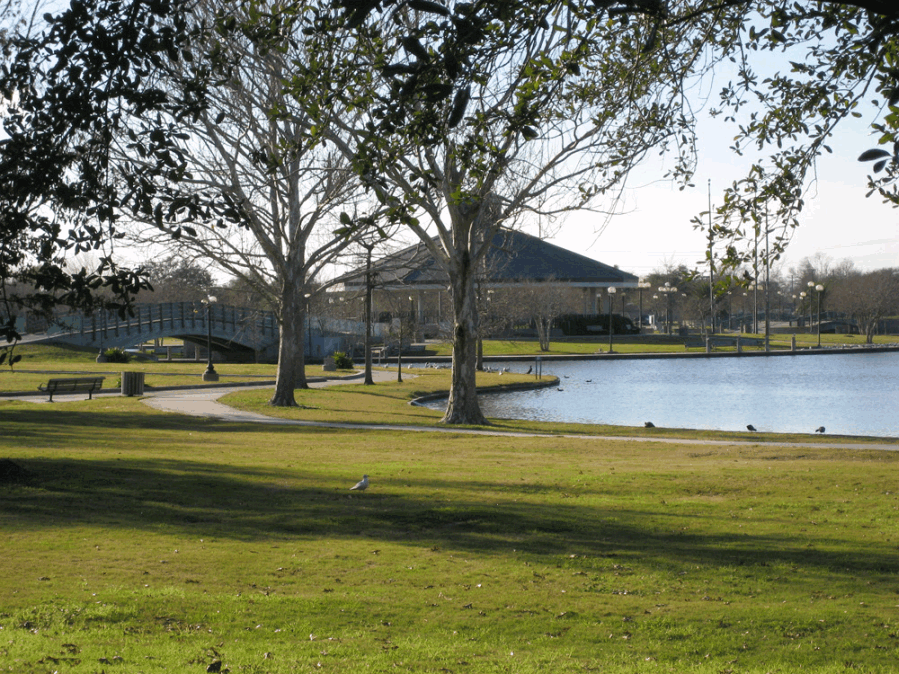|
Today in New Orleans History |
|
|
August 18


 To receive an update for each day in New Orleans history,
join our facebook page - Today in New
Orleans History.
According to A History of Louisiana (1909) by New Orleans historian Alcée Fortier: It
was found that there was no hangman in the colony, so the condemned prisoners were ordered to be shot. When the day of execution
came, hundreds of people left the city. Those who could not leave went into their houses, closed the doors and windows and
waited in an agony of sickening dread to hear the fatal shots. Only the tramping of soldiers broke the deathlike stillness
which brooded over the crushed and helpless city. At three o’clock on a perfect October afternoon in 1769, the condemned
men were led to the Spanish barracks. Lafreniere, it is said, gave the order to fire. A volley of muskets broke out on the
still air, and five patriots went to their death, — the first Louisianians to give their blood for the cause of freedom. A brief history of the LaFreniere property: The 5000 acre
land grant known as Elmwood Plantation was received from Bienville as a reward for Nicolas Chauvin de la Freniere's service
to the colonization of New Orleans. At his death the land passed to his son, Nicolas de la Freniere, fils [the son].
427 acres were used for the multi-million dollar pari-mutual Magnolia Park
Inc. Harness Racing course which opened in 1954 on Frank J. Clancy Boulevard (now
Downs Boulevard). The company built a $100,000 road (David Drive?) from Airline Highway
to the track where there was parking for 5000 vehicles, seating for 2500 in the grandstand
(the dining area seated 600) and accommodations for over 20,000 people
on the grounds. Barns provided spaces for 600 horses on the 227 acre track. The remaining
200 acres was later used for housing development. The harness racing season ran from
September to Thanksgiving Day (when the New Orleans Fairgrounds opened each
year). In 1959 the track was renamed Jefferson Downs which offered nighttime
horse racing. It closed in 1965. Lafreniere Park groundbreaking
was celebrated in 1977 -- the park was dedicated and opened in 1982. Photo by Megastealer  To receive an update for each day in New Orleans
history, join our facebook page
- Today in New Orleans History
August 18th, 1779: A hurricane made landfall at New Orleans. At that time, Spain had declared war on
Great Britain. Almost all of Governor Bernardo de Galvez' ships that were to be used to secretly seize the British post
at Baton Rouge were grounded or destroyed, thus ruining his plans for invasion until the 27th. The only ship that escaped
disaster was El Volante. Some of the ships were found in the middle of woods after the storm! Wind and rain began
on the night of the 17th. Full violence of the storm was attained by 3 am. All houses, pirogues, barges, and boats were
decimated; fields were leveled and all crops, stock, and provisions were lost. These included an American Frigate,
the Morris. Galvez described the Hurricane in a Report to the King of Spain on the Manchac and Baton Rouge Campaigns dated
October 16, 1779 as follows: "...I made my preparations and decided to leave on August 22nd, with
intentions to ask the individuals on the 20th to follow me; but on the 18th, such an During this storm, William Dunbar made observations that uncovered the
true nature of tropical storms and hurricanes; that they had a progressive forward movement and that the winds revolved
around a vortex at the center. His findings were presented to the American Philosophical Society in 1801. Note:
Cattle was brought into LA from Spanish Texas to restock the cattle destroyed by the hurricane. Thus Spanish Texas
played a major part in the American Revolution by supplying Galvez. |
|
|

To receive an update for each day in New Orleans history,
join our facebook page - Today in New
Orleans History.
Analytics |


